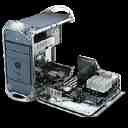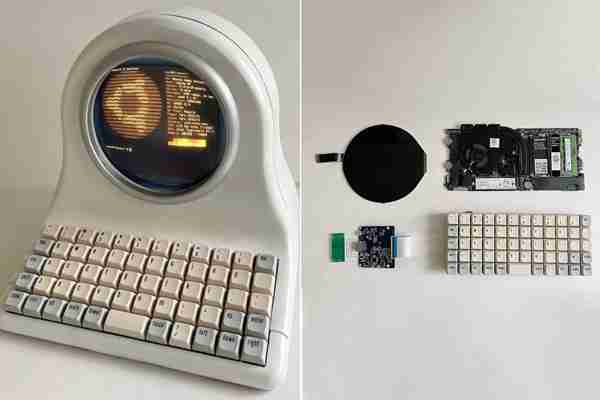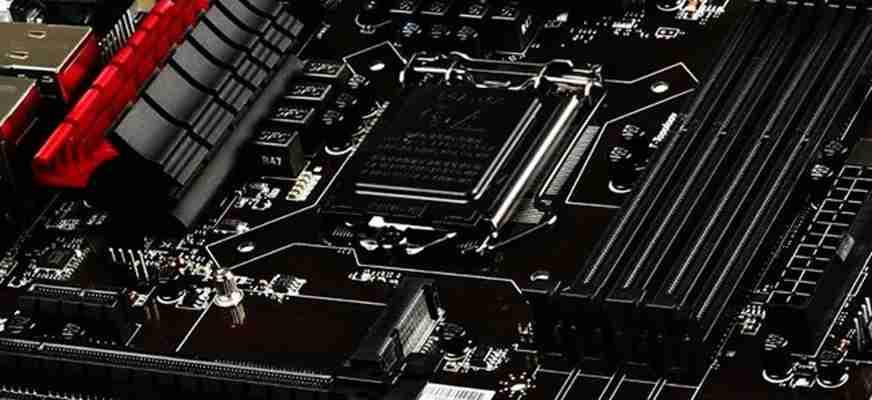How to Check Your Motherboard Model Number on Your Windows PC
Posted by Julia Werner •
Find Motherboard Model in Linux
In Windows, you can see information about the motherboard installed in your PC using various GUI tools. In Linux, there are no such tools installed out of the box. While you can install some of them to get motherboard information, there is a single console command you can issue and get your motherboard model and other details instantly.

Advertisement
There is a special console tool dmidecode which utilizes sysfs to provide information about your motherboard. Here is a brief description of the tool taken from its man page.
dmidecode is a tool for dumping a computer's DMI (some say SMBIOS) table contents in a human-readable format. This table contains a description of the system's hardware components, as well as other useful pieces of information such as serial numbers and BIOS revision. Thanks to this table, you can retrieve this information without having to probe for the actual hardware. While this is a good point in terms of report speed and safeness, this also makes the presented information possibly unreliable. The DMI table doesn't only describe what the system is currently made of, it also can report the possible evolutions (such as the fastest supported CPU or the maximal amount of memory supported). SMBIOS stands for System Management BIOS, while DMI stands for Desktop Management Interface. Both standards are tightly related and developed by the DMTF (Desktop Management Task Force). As you run it, dmidecode will try to locate the DMI table. It will first try to read the DMI table from sysfs, and next try reading directly from memory if sysfs access failed. If dmidecode succeeds in locating a valid DMI table, it will then parse this table and display a list of records like this one: Handle 0x0002, DMI type 2, 8 bytes.
Base Board Information Manufacturer: Intel
Product Name: C440GX+
Version: 727281-001
Serial Number: INCY92700942 Each record has: A handle. This is a unique identifier, which allows records to reference each other. For example, processor records usually reference cache memory records using their handles. A type. The SMBIOS specification defines different types of elements a computer can be made of. In this example, the type is 2, which means that the record contains "Base Board Information". A size. Each record has a 4-byte header (2 for the handle, 1 for the type, 1 for the size), the rest is used by the record data. This value doesn't take text strings into account (these are placed at the end of the record), so the actual length of the record may be (and is often) greater than the displayed value. Decoded values. The information presented of course depends on the type of record. Here, we learn about the board's manufacturer, model, version and serial number.
To find the motherboard model in Linux, do the following.
Open a root terminal. Type the following command to get the brief information about your motherboard: dmidecode -t 2 The output will be like this: To get more details about your motherboard information, type or copy-paste the following command as root: dmidecode -t baseboard See the following screenshot:
The -t argument filters the output by the specified DMI type. 2 means 'Baseboard'.
When you are using the 'baseboard' option for the -t argument, it uses a combination of DMI types (as SMBIOS specification defines), so you see more details.
Type man dmidecode to learn more about its command line argument.
That's it.
Support us Winaero greatly relies on your support. You can help the site keep bringing you interesting and useful content and software by using these options:
If you like this article, please share it using the buttons below. It won't take a lot from you, but it will help us grow. Thanks for your support!
Advertisment
Mainboard Terminal Custom Computer Looks to be Straight from a Science Fiction Movie

Penk Chen’s Mainboard Terminal may look like something from a science fiction movie, but it’s actually an all-in-one computer. This isn’t a high-powered gaming PC, as it uses a Framework Mainboard rather than a traditional motherboard and hardware components. This Mainboard was then placed inside a custom 3D-printed case, connected to an OLKB Preonic mechanical keyboard.
Unlike Raspberry Pi, the Framework Mainboard can run x86 operating systems, like Windows 10 x86, BeOS, NetBSD, Unix, TinyOS, Sun Solaris and more. Penk’s Mainboard Terminal is running Ubuntu 22.04 LTS with a few tweaks to enable the circular display to run properly. Sure, the user interface doesn’t quite look right in such a display, but the novelty science fiction aspect is most certainly there. This computer would definitely go well with the BMW i Vision Circular EV.
131 Reviews Lenovo IdeaCentre AIO 3 AMD All-in-One Computer, 24" FHD Display, Ryzen 5 5500U, 16GB RAM, 512GB SSD, DVD RW Drive, Windows 11 This space-saving AIO PC hides raw, unfiltered power - with an AMD Ryzen 5 55000U processor, the IdeaCentre AIO 3 thrives under heavy performance loads
We designed the slim and compact all-in-one computer for ease and convenience with fewer cables and clutter, a dock for your cell phone, plus instant privacy and instant login features for better security; wireless keyboard and mouse included
View more of the screen with this AIO computer's three-sided narrow bezel FHD display for vibrant colors with crystal-clear quality from almost any angle; plus, the IdeaCentre AIO 3 streams high-octane, sharply etched audio over its two 3W stereo speakers certified by Harman Kardon
The hidden camera on the top of the AIO 3 offers up to 5M clarity, enhancing authenticity during your video chatting or conferencing – push the webcam down for extra security
Connect with two USB 2.0 ports and two USB 3.2 Gen 2 Type-A ports, one 1000 LAN, one microphone/earphone combo, one Power DC Jack and one HDMI-out
How to Check Your Motherboard Model Number on Your Windows PC
Whether you need to update drivers, check hardware compatibility, or you’re just curious, it’s way easier to check your motherboard model number with these simple tricks than to crack open your case to check the board itself. Here’s how to check your motherboard model number from the comfort of your keyboard.

Why Do I Want To Do This?
Knowing your motherboard’s model number is important if you’re thinking of upgrading your drivers, buying new hardware (you’ll need the proper expansion or memory slots, for example), or just checking the capabilities of your board if you’re considering upgrading your whole rig.
If you kept the paperwork that came with your computer (or the individual components, if you built it yourself), you can often times reference that. Even then, it’s best to check to make sure the documentation is correct. Rather than open the case and search for the model number on the board itself, use tools within Windows to check things out instead.
Check Your Model Number from the Command Prompt (or PowerShell)
If you’re comfortable using the Command Prompt (or PowerShell, where these commands also work), you can easily check a variety of motherboard and hardware stats using the handy Windows Management Instrumentation Command-line (WMIC)—a command-line interface for Microsoft’s powerful WMI tool.
With the WMIC, you can entry the query baseboard to check motherboard stats, and then use additional modifiers like get Manufacturer, Model, Name, PartNumber, slotlayout, serialnumber, or poweredon to get more detailed information about the motherboard.
Advertisement
As an example, let’s check a motherboard’s manufacturer, model number, and serial number using WMIC.
Open up the command prompt in Windows via either the run dialog (Windows+R) or by searching for “cmd” on the Start menu—no need to run the Command Prompt as an administrator. And, as we mentioned, you could also use PowerShell here, if you prefer. The command works the same in both shells. At the command line, type the following text (noting that there are no spaces between the modifiers—just commas), and then hit Enter:
wmic baseboard get product,Manufacturer,version,serialnumber
The information returned checks out for the motherboard we’re using: the manufacturer is Gigabyte, the board is the Z170X-Gaming 7, and while the WMIC tool tried to check the serial number, Gigabyte left that particular bit unfilled for whatever reason. Nonetheless, the WMIC tool functioned just as it should, and without opening the case or using any third party tools, we have the basic information we’re looking for.
Check Your Model Number with Speccy
If you’d prefer a GUI-based way to check your motherboard’s model number (as well as a method that yields more information at a glance than the WMIC tool), you can grab the free tool Speccy. It’s a handy app to have around.
After downloading and installing Speccy, go ahead and fire it up.
You can see the motherboard model number right on the summary page, along with it’s current operating temperature (assuming your board includes that). You can also see basic details about other system components.
Advertisement
Click over to the “Motherboard” tab on the left to see even more information about your motherboard, including details about the chipset and voltages, along with the types of slots included on the board and whether or not they’re currently in use.
Tagged:
Leave a Reply
neueste Artikel
- How to Check The Serial Number...
Buying a huawei watch can sometimes be a dream come true, especially if you have had b... - Synology DiskStation Manager
Der DiskStation Manager (DSM) ist das Betriebssystem für die Network Attached Storage-Systeme (NAS... - SAN vs. NAS: Unterschied ...
„Big Data“ lässt grüßen! Laut einer Studie des Festplatten-Giganten Seagate soll sich der weltweit... - Online Banking Software: 4...
Wer Bankgeschäfte über das Internet erledigen möchte, muss dafür nicht zwingend über die Internets... - Ninite – das wohl nützlic...
System-Tools gibt es wie Sand am Meer. Die meisten versprechen viel und halten wenig. Wirklich gut... - Digitalisierung anpacken:...
Die Corona-Pandemie hat ohne Zweifel einen starken Beitrag zur Digitalisierung kleinerer und mitte...
populäre Artikel
- How to Check The Serial Number...
Buying a huawei watch can sometimes be a dream come true, especially if you have had b... - Synology DiskStation Manager
Der DiskStation Manager (DSM) ist das Betriebssystem für die Network Attached Storage-Systeme (NAS... - Online Banking Software: 4...
Wer Bankgeschäfte über das Internet erledigen möchte, muss dafür nicht zwingend über die Internets... - Einrichten einer lokalen...
Dieser Artikel richtet sich an alle Hobby-Webentwickler, die ihre erstellten Web-Projekte auf dem... - Digitalisierung anpacken:...
Die Corona-Pandemie hat ohne Zweifel einen starken Beitrag zur Digitalisierung kleinerer und mitte...
Lieblingsartikel
- SAN vs. NAS: Unterschied ...
„Big Data“ lässt grüßen! Laut einer Studie des Festplatten-Giganten Seagate soll sich der weltweit... - Online Banking Software: 4...
Wer Bankgeschäfte über das Internet erledigen möchte, muss dafür nicht zwingend über die Internets... - Ninite – das wohl nützlic...
System-Tools gibt es wie Sand am Meer. Die meisten versprechen viel und halten wenig. Wirklich gut... - Einrichten einer lokalen...
Dieser Artikel richtet sich an alle Hobby-Webentwickler, die ihre erstellten Web-Projekte auf dem...
